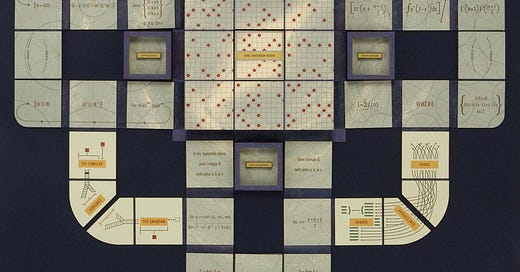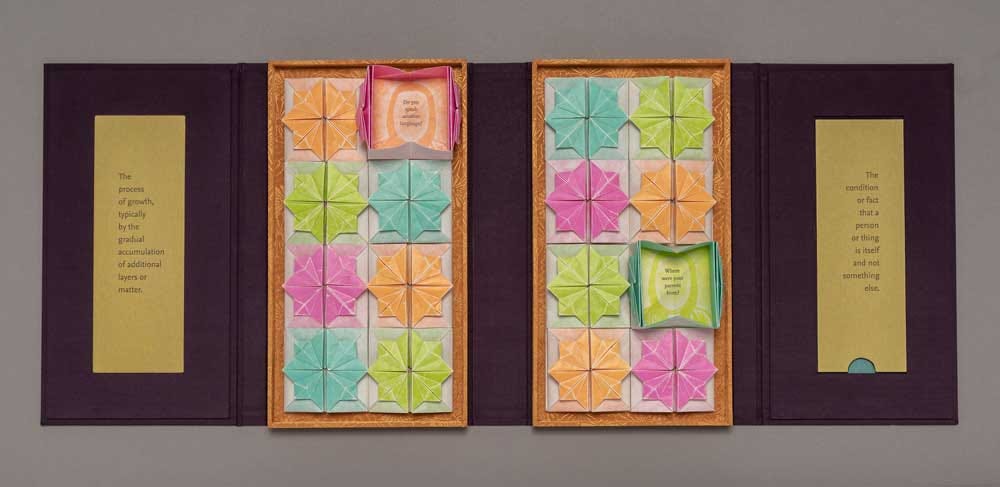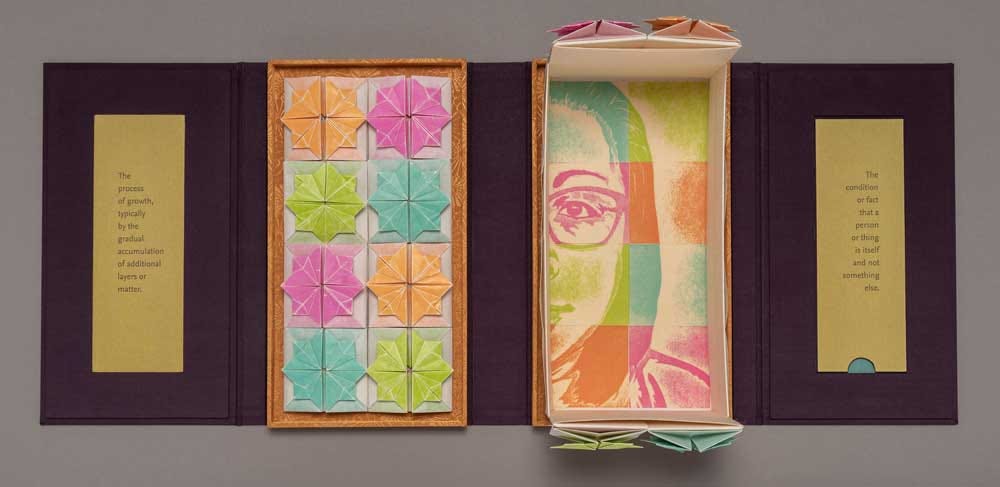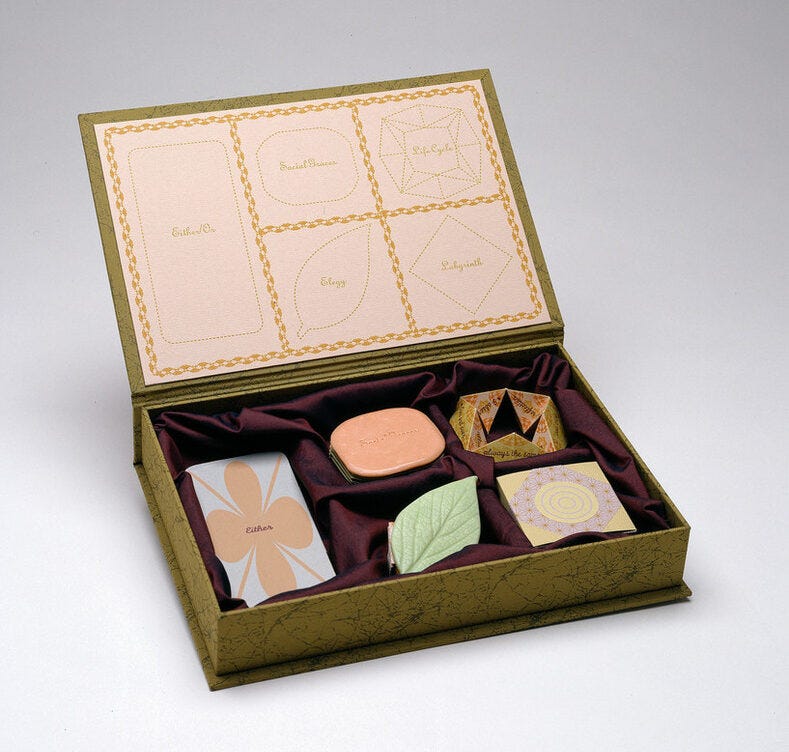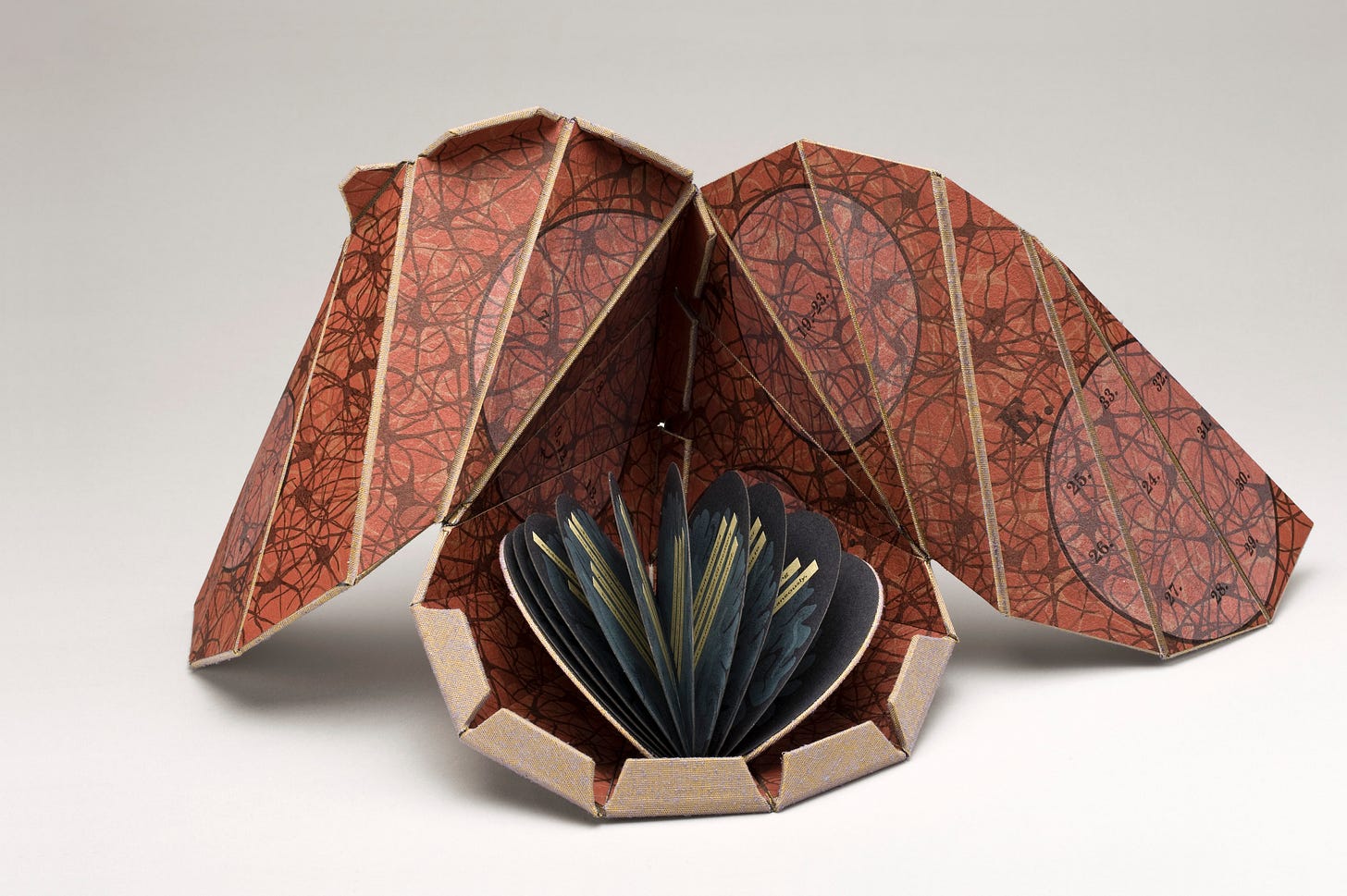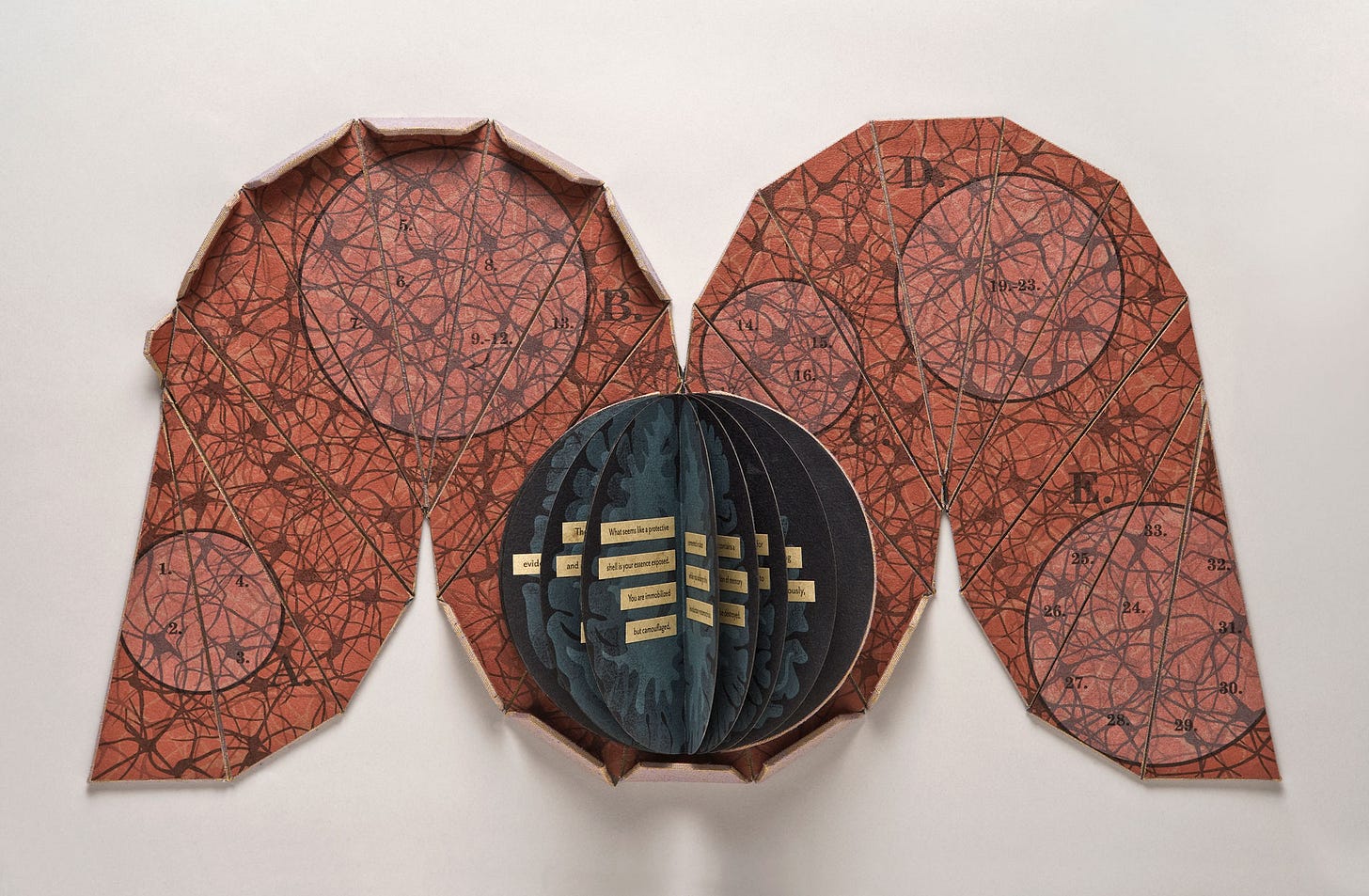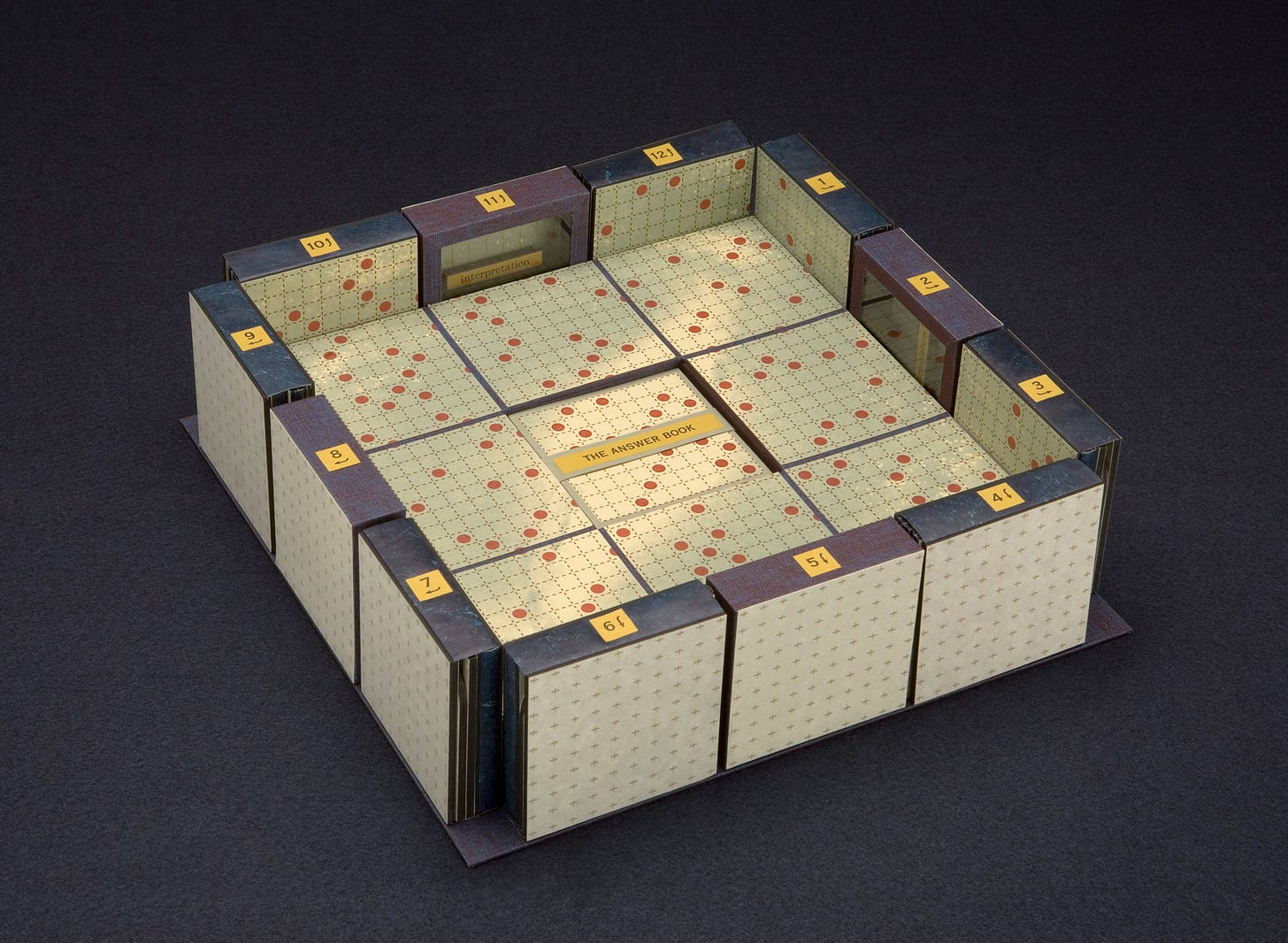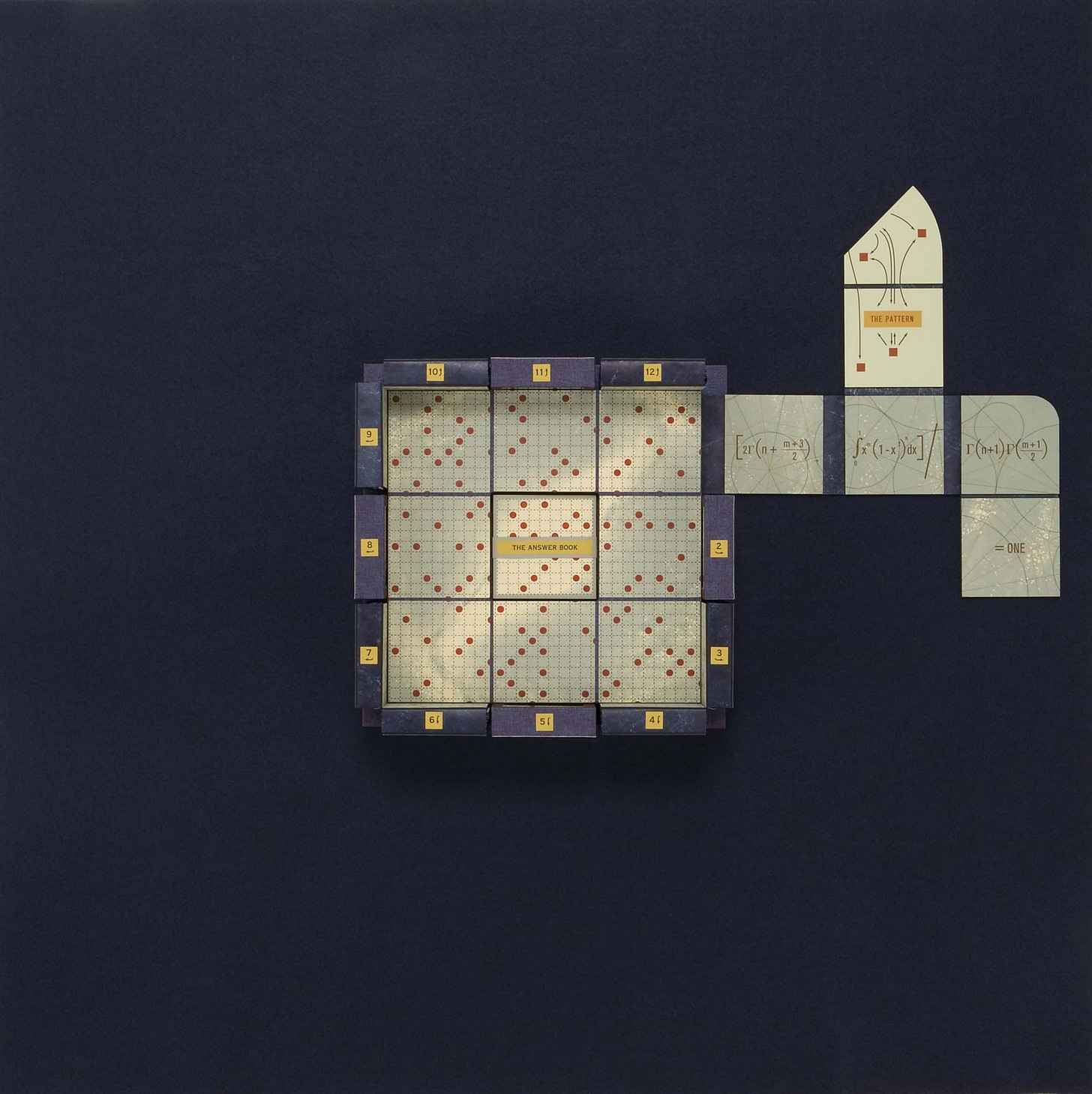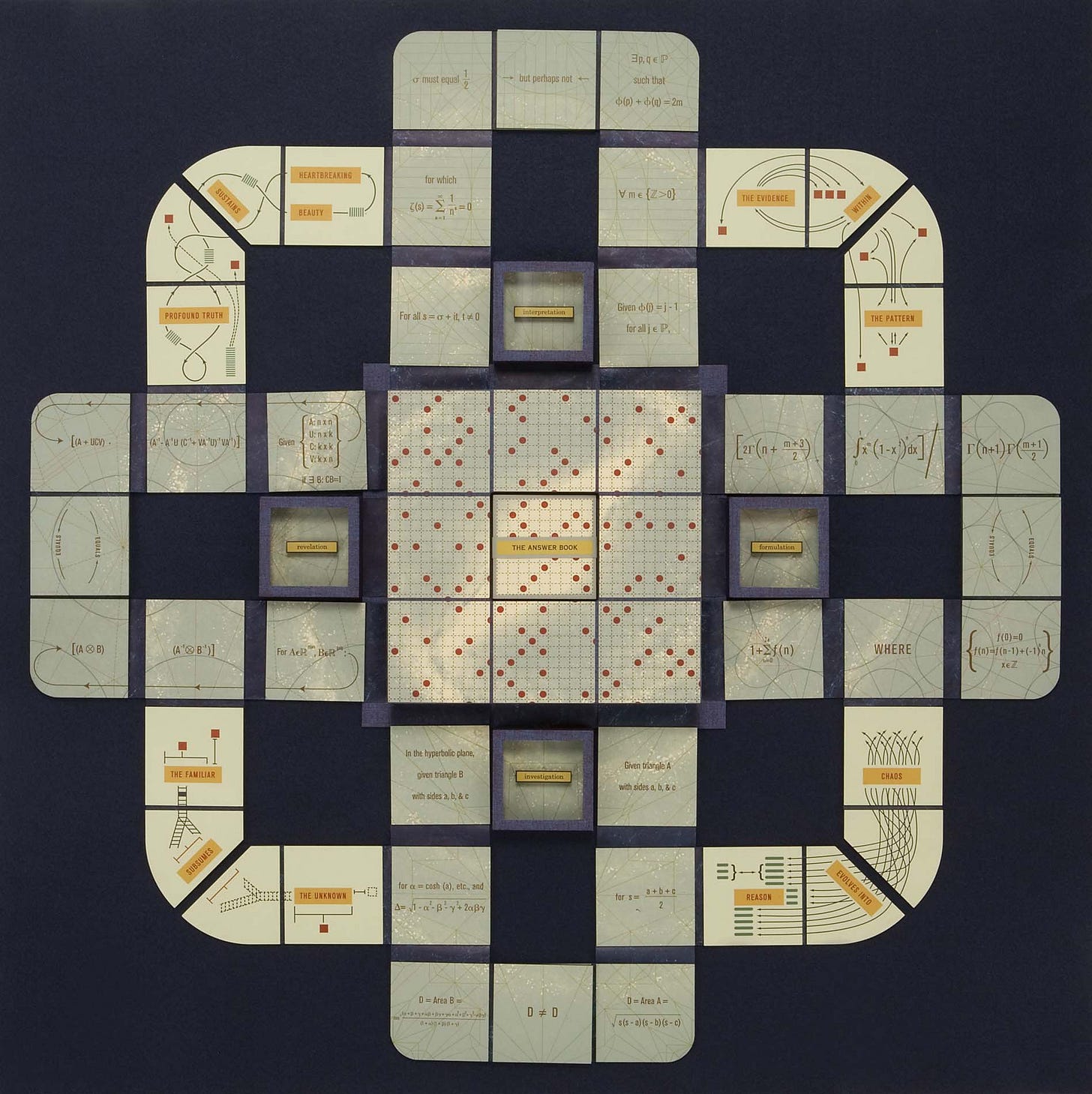In the spotlight: Julie Chen
We stumbled upon Julie’s work a while back and shared a few of her pieces already, but her work deserves an extra highlight.
Chen’s artist’s books can be found in library and museum collections around the world, including the libraries of the Museum of Modern Art, New York, and the Victoria and Albert Museum, London.
Chen says, “My approach to artists’ books combines personal narratives with book forms that present the reader with both intimate reading experience as well as beautiful objects that can be displayed as sculpture. The idea of giving order to personal experience through the use of mapping, charting, and numbering continues to be an important underlying theme that runs through much of my work. Enclosures such as boxes, along with the corresponding concept of creating a world within a world, also play a major role in the presentation of my book works.”
Below are a few of our favourite books made by Julie Chen. Check out her entire portfolio here.
The Accretion of Identity
We love how Julie Chen has taken a Chinese thread book (zhen xian bao), originally used to store threads and needles I’ve been told, to hold words and images instead.
“The Accretion of Identity was letterpress printed from photopolymer and pressure plates on handmade abaca and Japanese papers. The book structure is a Chinese thread book (zhen xian bao). It contains four levels of folded boxes housed in a box with a magnetic closure.”
Bon Bon Mots
“I got the idea for the format of Bon Bon Mots about two years before I actually made the book,” says Julie Chen. “In my mind’s eye, I could clearly see a collection of intimate, confectionlike book-objects. They would be so appealing that the reader could not resist holding each one in his or her hand and reading the contents. This, I thought, would be the perfect way to present contents that might not be so pleasant after all.”
“Among the ‘sweets’ in the confection box are a phrasebook of social graces and a calendar recording each day’s guilt and worries. The texts mix sadness and sweetness in equal proportions.”
Chrysalis
Chrysalis is an interpretation of the complex and transformative nature of the process of grief. The piece consists of a sculptural book object housed in a box. The book object is held together by a series of magnets and can be opened by the viewer until all the panels lie in a flat plane, revealing an inner book with circular pages that can be held in the hand and read.
A Guide to Higher Learning
A Guide to Higher Learning examines the experiential process of acquiring knowledge, on both academic and personal levels. The piece is comprised of 8 sections of rigid square pages that are hinged together in unexpected ways, giving the reader a physical reading experience that mirrors the complex meaning of the content. The book in its fully unfolded form reveals an intricate and fascinating visual pattern of information.
Which book is your favourite?


